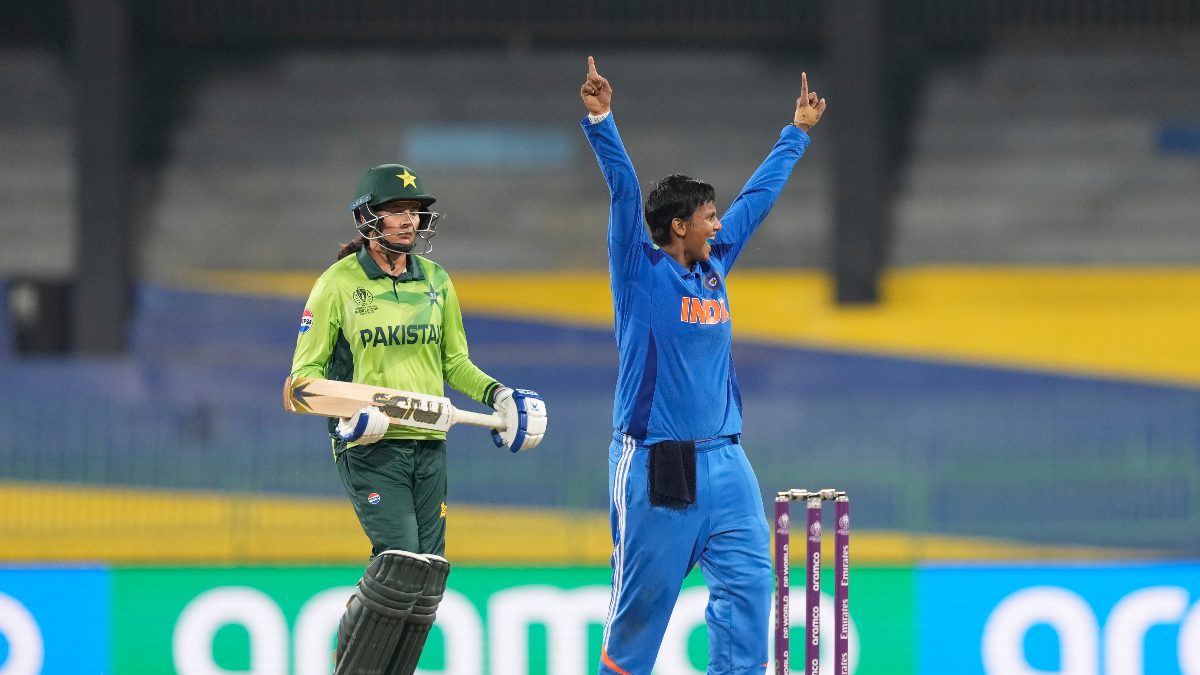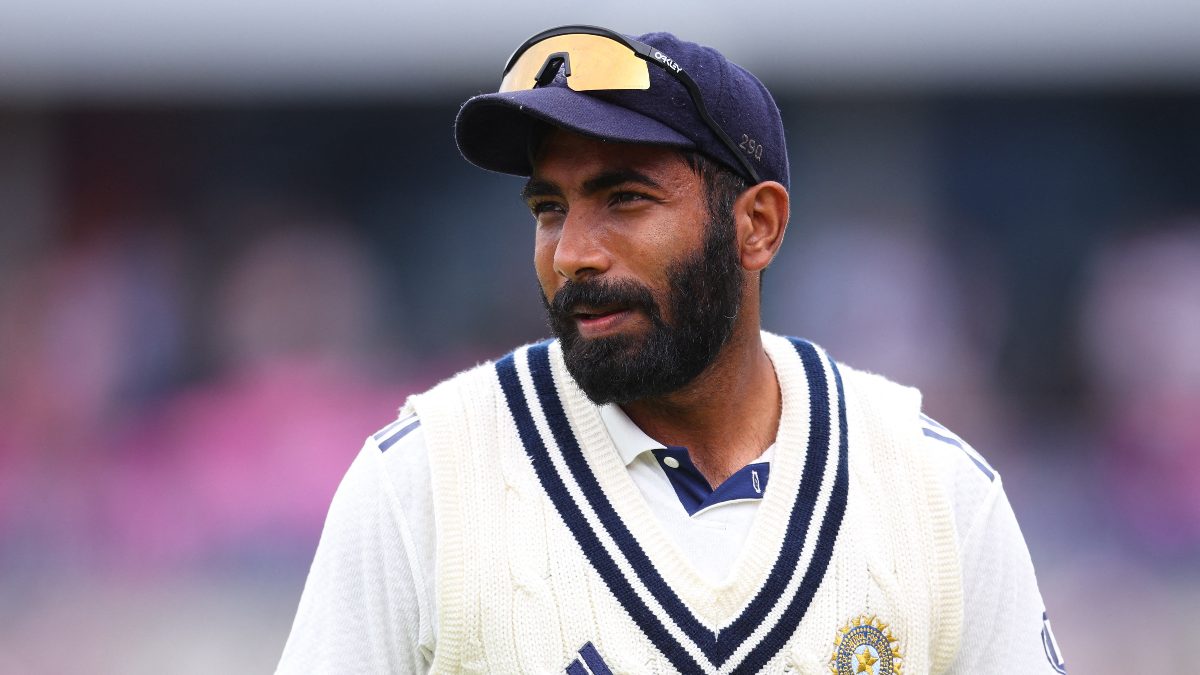Two matches, two wins and four points. India’s Women’s World Cup campaign is up and running, and they have outlasted two subcontinental rivals in the process. Sri Lanka’s challenge was first dispatched in Guwahati, before Pakistan were thwarted in Colombo.
That means India, at the time of the writing, sit pretty at the top of the table. It is an enviable position to be in, but it must also be sprinkled with context because there are still areas that are not quite up to scratch for India.
Indian batters failing to capitalise on good starts
Smriti Mandhana, for starters, has not come to the party at all. In two games, her highest score is 23 and, in both innings, she has not found any rhythm. With her not able to find the fence often enough, India have lacked impetus at the top and have struggled to put up big scores.
Their reliance on Mandhana, in fact, has been stark since the start of last year. India have managed 14 women’s ODI hundreds in that period, and eight of them have been off Mandhana’s bat. And while it may be a bit of a stretch to say India are solely dependent on their star opener, it would not be very far from the truth either.
Harleen Deol and Pratika Rawal, meanwhile, have gotten starts in both matches, but neither has been able to nail their tempo. Nor have they been able to completely offset Mandhana’s lack of runs. There have been too many dot balls and their inability to make up adequately enough with boundaries has meant India have not been able to inject momentum after Mandhana’s dismissals.
The other thing bothering India is that none of their middle order has been able to play a defining knock. Amanjot Kaur and Deepti Sharma rescued India in Guwahati, but the likes of Harmanpreet Kaur and Jemimah Rodrigues have not hit their straps. Richa Ghosh, against Pakistan, showed what she could do towards the end, but India must not be guilty of giving her too many resurrection jobs.
Impact Shorts
More ShortsContrast that to a team like Australia. They have match-winners from top to bottom, and if one or two or three or even four of them fail, like it happened to an extent against New Zealand, they have someone like Ashleigh Gardner who can pop up with a hundred and do so at a brisk clip.
The depth in batting, which is something India seem to be leaning towards too, also allowed Australia to keep coming hard at New Zealand, even when they kept losing wickets. And though India, in theory, are attempting to replicate that, there has been no similar conviction. Or execution.
A gulf does exist in collective batting pedigree but India, at the moment, are getting caught between being too cautious after Mandhana’s dismissals and then perishing while trying to be too ambitious through the middle. A better ploy would be to play more risk-free cricket, which involves more singles and doubles and, crucially, more running.
If India can sustain it, fitness-wise, remains to be seen, but this boom-or-bust approach, more often than not tied to how Mandhana is faring, might not be very sustainable either.
Harmanpreet’s DRS mess in Colombo
India’s usage of the DRS has also been pretty ordinary. In the first innings, Mandhana was trapped plumb in front and yet, she went upstairs, only to head back to the dressing room with her bat tucked inside one arm, and her wasted review tucked inside the other.
But it was in the second essay that things truly got out of hand. It took India a grand total of one ball to go upstairs, and they did so for an incident where the bat and the ball were in different postcodes. The ball also pitched well outside leg, meaning India had nothing to fall back on, even as the ball brushed the back leg. Then, in the same over, Renuka Singh trapped Sadaf Shamas in front, but India, bitten once already, were too shy to go upstairs, despite Ball Tracking returning three reds.
The final ball of the fourth over was no different, although on that occasion, India did see the back of Muneeba Ali courtesy a dismissal that descended into chaos. And just to show that India were not learning, they failed to review an lbw appeal off the fifth ball of the sixth over, offering Sidra Amin a reprieve. Amin, for context, top-scored for Pakistan with 81.
To make it cyclical, India then burnt another review later – again trying in vain to get a caught-behind overturned. With tougher and bigger games lying in wait, Indian fans will hope that Harmanpreet can see through her girls calling wolf and trust them enough to actually go upstairs when it warrants it. And not just when the emotions dictate it.
The sloppiness was not restricted to DRS usage, however. There were a few dropped catches, with Ghosh guilty of one behind the stumps. A few fumbles led to boundaries as well and teams with greater batting nous than Pakistan might not let India off the hook that easily.
These could, of course, be put down to India having a couple of imperfect days, and feed into the school of thought that when India do string it all together, teams will be no match for them. Or that they are saving their energy and their best displays to peak later in the tournament and during games that really matter. If this would have been Australia or England, this narrative would have been bought too.
But as hypocritical and double-standard as this may sound, the onus - because India have nothing tangible to show for their previous toil on the world stage - is on them to prove why this time is indeed different, why this campaign, earmarked as one that could change the way the team and the sport is perceived, will finish with a title, and why this slightly slower than expected beginning will click into overdrive when push comes to shove.
Two games in, India have done what the points table has asked them to. But in two matches, they have not shown the ruthlessness that champions of the past have. The sort of edge and aura that makes opposition teams wonder what they must do and makes them tremble in trepidation.
India have plenty of time to alter that. But this box - of a statement win that will make their rivals gasp and perhaps gulp in the knowledge of what India can be - needs ticking off soon.
Until that happens, the feeling of this possibly being another campaign of unfulfilled potential and promise will linger. And even points on the board might not make it disappear.


)

)
)
)
)
)
)
)
)



